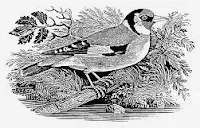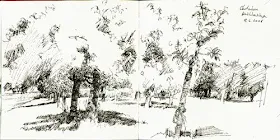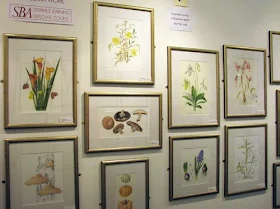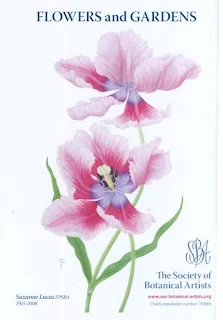At the beginning of April I asked What's your favourite subject matter?. What do you like to draw or paint the most? This post reports on
- the results of this month's Making A Mark Poll
- a commentary on what the results mean - highlighting some implications for art publications and art education/classes/workshop
- a synopsis about genre art and the traditional hierarchy of genres - how art was categorised in the past.
173 of you responded to the poll (in the sidebar) and told me what you like best. Here's my analysis of what the polls tells us and my comments on the results.
Please feel free to add your comments on the results below.
- Portraits / Figures are the most popular subject for artwork. Around a quarter of you like drawing and painting people and figures best of all
- Add in animals/wildlife and creating portraits of living beings accounts for some 40% of respondents
- The second most popular subject are scenes - whether these are landscapes, urban scenes or scenes of interiors - 18% prefer 'the big picture.
- People whose favourite subject is Animals and/or wildlife accounted for 16% of the responses.
- In the middle of the poll, we find that 15% of you like to draw and paint anything and everything. This figure could have been a lot bigger. However I rather suspect that some of who tend to draw or paint more than one subject had to make a decision about whether we said we genuingly had not preference (ie anything and everything) or whether we did have a favourite. I know I certainly had to have a long ponder before I answered my own poll!
- Drawing or painting flowers or producing botanical art attracted 12% of the poll - which is 50% more than the number who voted for still life as being their favourite subject (8%)
- Only 5% are motivated by ideas and involved in the development of conceptual or symbolic art. I'd expect to get a much higher percentage than this if I was asking full time professional contemporary artists. I'm wondering whether this very low percentage is because most readers are people who don't routinely produce art based on an idea.
- Even fewer (3%) had any sort of narrative commonly running through their art.
Here are some suggested implications of this poll.
Portraits/Figures
- Portrait artists will always find themselves with lots of company and competition when it comes to attracting commissions
- Portrait competitions will always attract a lot of entries
- Art Publishers should note (if they haven't already!), that books about portraits and portraiture will always find a ready market with artists wanting to find out more about how to produce a good portrait
- Tutors providing portrait workshops should generate good business
- The poll explains why one of my most popular posts is 10 Tips for How to Sketch People!
- You can find more information, advice and resources in Portraiture - Resources for Artists
- I'm wondering whether this topic is maybe favoured by those artists who don't like drawing figures? Yet many a scene has been enlivened through the addition of figures.
- Changes in the way we relate to animals and a number of artists' support for conservation now makes this a very important category for art.
- The number of wildlife exhibitions and competitions are increasing all the time and always get lots of entries and lots of interest from the public.
- The public are also rather fond of having their own pets immortalised in art!
- 12% of you voted for flowers and/or botanical art as your favourite subject matter. I'd characterise this as a solid and perennial minority interest.
- You can find information and advice about drawing and painting flowers and botanical art in Flowers in Art - Resources for Artists and Botanical Art - Art Book Reviews for Artists
- The 'still life' is a genre beloved of daily painters - and yet in general it's not a popular subject area. It was ever thus - see more about the hierachy of genres below.
- Maybe still life artists experience less competition when entering an art competition?
- You can find information and advice about drawing and painting Still Life - Resources for Artists
- The current preferences of artists responding to this poll appear to relate more to contemporary realism
- The traditional respect for narrative, important concepts and symbolism is no longer a priority. See more about the hierarchy of genres in the past below
Genre is the word used to describe broad categories or types of paintings. Confusing one of those genres is itself called genre painting!
In painting, there has also been a traditional hierarchy of genres in the art history. This is the Tate Gallery's definition of what this means.
The genres, or types of painting, were codified in the seventeenth century by the French Royal Academy. In descending order of importance the genres were History, Portrait, Genre, Landscape, and Still life. This league table, known as the hierarchy of the genres, was based on the notion of man the measure of all things – landscape and still life were the lowest because they did not involve human subject matter. History was highest because it dealt with the noblest events of human history and with religion.Here's an alternative version
Tate Glossary - Genres
A hierarchy of genres is any formalization which ranks different types of genres in an art-form in terms of their value. The most well known set of hierarchies are those held by academies in Europe between the 17th century and the modern era, and of these the hierarchy for the genres of painting held by the Académie française which held a central role in Academic art.There's another good discussion of the hierarchy of genre painting on this website. This highlights the artists and works associated with different genres.
Reviewpainting.com
These genres in hierarchical order are:
- History painting - The "grand genre" - History paintings took ideas, characters and aspects of religion, mythology, history and allegory as their subject matter - anything which conveyed a moral or intellectual message.
- Portrait painting - where the intent is to depict the visual appearance of the subject - whether historic and larger than life or familiar and small.
- Genre works - genre painting depicts scenes from and aspects of everyday life by portraying ordinary people engaged in common activities. Genre artworks were also typically smaller works of art - on a domestic scale.
- Landscape painting - traditionally depicts 'the scenic view' as found in the countryside (mountains, valleys, trees, rivers, and forests) around water (sescapes, lakes and rivers) or in towns and cities.
- Still life painting has typically been small scales and traditionally has been considered the least elevated of the genres - especially when the portrayal of everyday objects had no underlying meaning or message.
Artcylopedia Categories of Artists
If you're interested you'll find below the categories used by Artcyclopedia to categorise the subject matter of different artists. I've allocated them between the different categories used in the poll.
Portraits and figures
Scenes - landscape / urban / interiors
Animals/ Wildlife
Flowers/Botanical Art
Still life
Narrative (the story is the main focus)
Conceptual / symbolic
- none
The types of artists not covered by the poll include: Children's Books; Comic Art; Fantasy Art; Orientalism; Photojournalism; Sporting Art; Western Art . AbsoluteArts also comes up with a very long lost of different types of subject matter - with no sense of hierarchy whatsoever!
Links:






















